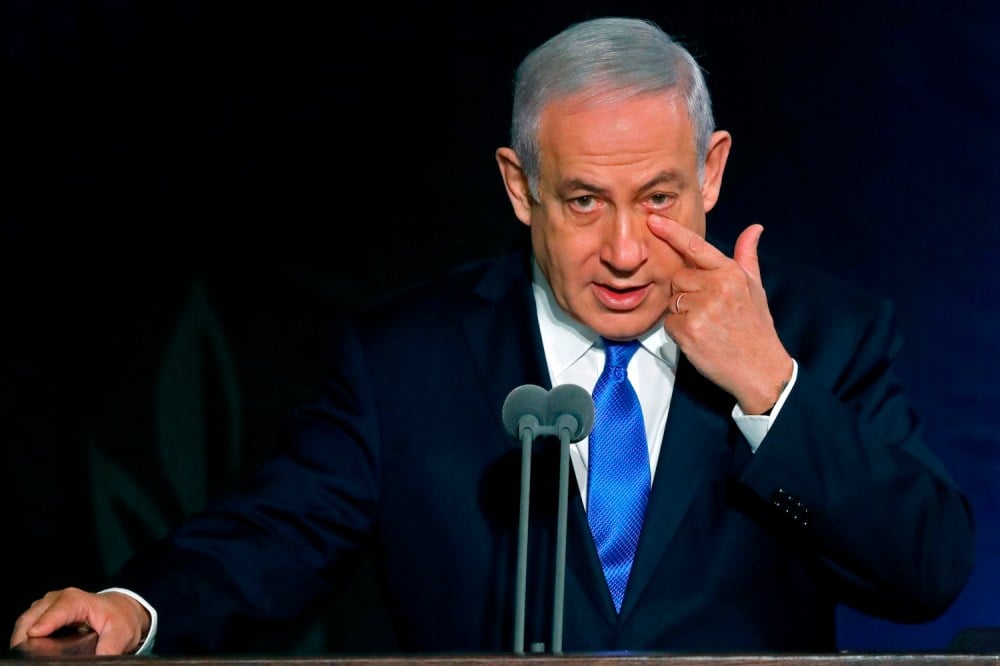Twelve days of war between Israel and Iran left a trail of devastation across both countries. Yet the clearest takeaway is this: Prime Minister Benjamin Netanyahu’s bold gamble failed. Despite launching one of the most audacious military campaigns in Israel’s history, the war was short, punishing, and ultimately fell far short of its declared aims.
It began with a meticulously planned Israeli offensive. Years of intelligence work culminated in a wave of covert operations—drones assembled inside Iran, sleeper cells detonating bombs, and targeted assassinations of top military figures and scientists. These were followed by conventional airstrikes on military bases and nuclear facilities such as Natanz and Fordow. But Israel’s targets extended well beyond strategic infrastructure. Residential neighborhoods, prisons, media offices, and police stations were also hit, pointing to a broader strategy aimed at sowing chaos and igniting internal unrest.
The human toll was staggering. In Iran, at least 610 people were killed, including 49 women, 13 children, and five health care workers. Another 4,746 were injured, among them 20 health care workers. Medical infrastructure also suffered significant damage, with hospitals, ambulances, and emergency facilities hit. In Israel, Iranian missile and drone strikes killed at least 28 people and injured over 3,200. More than 9,000 Israelis were displaced, and dozens of homes and public buildings were damaged or destroyed.
As the dust settles, the true extent of the damage inside Iran remains unclear. This lack of clarity reveals a core dilemma for Israel and its U.S. allies: Military power alone cannot guarantee strategic success.
Despite Netanyahu’s vow to dismantle Iran’s missile and nuclear programs, and his thinly veiled hope that regime change would follow, Iran responded swiftly. Missiles were launched at Israeli cities and strategic targets. After the United States joined the conflict by bombing Iran’s nuclear sites, Tehran escalated further by striking Al Udeid Air Base, a U.S. military installation in Qatar, drawing Washington deeper into the crisis. Though telegraphed and limited in impact, the strike on Al Udeid sent a deliberate message: Iran could raise the stakes beyond its borders.
Within just 12 days of Israel’s initial strike, a cease-fire was reached under opaque terms, leaving the region in a state of uneasy pause.
There is no question that Israel achieved notable tactical successes, inflicting serious damage on Iran’s military command and scientific infrastructure. But strategic objectives carry greater weight. Based on available evidence, Netanyahu’s core goals—undermining Iran’s deterrence and meaningfully rolling back the elements of its nuclear program that pose the greatest proliferation risk—remain unmet.
One of the most significant failures lies in the nuclear file. There is no confirmation that Iran’s nuclear breakout capacity has been meaningfully degraded. While Trump administration officials have insisted that the strikes set Iran’s program back by years, early U.S. and European intelligence assessments suggest otherwise. Satellite imagery taken prior to the strikes showed trucks potentially removing sensitive equipment from key sites, and Iran had already announced the construction of a new, secret, and hardened enrichment facility that may be untouched. More critically, Iran’s stockpile of 60 percent enriched uranium and its advanced centrifuges—the core ingredients for developing a nuclear weapon—appear to remain intact. As many analysts warned before the war, verifying serious damage to Iran’s nuclear infrastructure is impossible without on-the-ground inspections or a full-scale invasion. In the absence of either, Iran’s nuclear program is entering a far more opaque and unpredictable phase.
This opacity is already taking shape. Just two days after U.S. President Donald Trump announced the cease-fire, Iran’s parliament passed legislation to suspend cooperation with the International Atomic Energy Agency. One lawmaker offered a revealing explanation: “Why was our nuclear facility attacked and you remained silent? Why did you give the green light for these actions? Today, they want to come again and conduct inspections to determine which sites were damaged and which were not so they can attack them again.” In response, Tehran appears set to embrace a strategy of “nuclear ambiguity,” similar to the posture Israel itself has long maintained—refusing to clarify the scope of its nuclear capabilities and denying access to inspectors.
This marks a dangerous new chapter. By attacking nuclear sites while continuing to demand inspections and sanctions, the United States and Israel have undermined the logic of nonproliferation diplomacy. Ironically, their actions may have done more to normalize the idea of an Iranian nuclear weapon than any step taken by Tehran itself.
While the nuclear outcome is uncertain, Iran’s missile capabilities were demonstrated with unmistakable clarity. Its ballistic missiles successfully penetrated Israeli and U.S. air defenses, targeting military bases, intelligence compounds, oil refineries, and research centers. Although Israeli censorship limited public reporting, more than 41,000 compensation claims were filed for war-related damage.
The material and economic costs were also significant. Ben Gurion Airport was shut down, economic activity slowed dramatically, and capital flight increased. Missile defense systems such as Arrow and THAAD were heavily depleted, with estimates indicating that Israel used at least $500 million worth of U.S. THAAD interceptors. Former Trump advisor Steve Bannon bluntly asserted that the cease-fire was necessary to “save Israel,” which he said was absorbing “brutal hits” and running low on defenses. Trump himself admitted that Israel had been hit “very hard” and, in the same press appearance, announced that China would be allowed to purchase Iranian oil to help Iran “get back into shape.”
Iran’s missile strikes also appeared deliberately calibrated. Following an Israeli drone strike targeting an Iranian oil refinery in the South Pars gas field, Iran responded by targeting a refinery in Haifa. After Israeli airstrikes targeted Iranian research centers suspected of involvement in nuclear activities, Iran retaliated by striking the Weizmann Institute of Science near Tel Aviv—a facility long suspected of playing a role in Israel’s own nuclear research. Through these reciprocal attacks, Iran aimed to signal its capacity for measured retaliation and to reinforce its deterrence posture. Notably, both sides refrained from targeting energy infrastructure after the initial exchange.
Beyond the battlefield, the war had significant social and political consequences inside Iran. Rather than sparking regime collapse, it led to a visible surge in nationalist sentiment. For a society long polarized by repression and economic suffering, the war became a unifying moment—not around the Islamic Republic itself but around the idea of defending the nation from foreign aggression.
Timing compounded this sense of national solidarity. The war came just as Iran was engaged in nuclear negotiations with the Trump administration. Many Iranians had hoped that the recent election of reformist President Masoud Pezeshkian, who campaigned on diplomacy and economic recovery, would lead to meaningful progress. Instead, they saw their country bombed while seeking compromise.
In response, a broad cross-section of Iranian society—from artists and athletes to both religious and secular Iranians, including many from Gen Z—mobilized to support one another. Civilians opened their homes to the displaced. The deaths of children, doctors, and ordinary people from indiscriminate Israeli strikes reinforced a perception that this war was not about liberating Iranians but about breaking apart the country.
The long-held belief by many in Washington that Iran’s government only needs one final external push to fall has been thoroughly discredited. Netanyahu launched this war to eliminate the strategic challenge posed by Iran. Instead, he exposed Israel’s vulnerabilities, intensified Iranian nationalism, and failed to destroy Iran’s core military and nuclear capabilities.
Paradoxically, the war may end up bolstering Iran’s position both regionally and diplomatically. While Trump and his envoy Steve Witkoff continue to insist that Iran must abandon all uranium enrichment, Tehran has remained firm that enrichment is nonnegotiable. Foreign Minister Abbas Araghchi has publicly reaffirmed that Iran will never give up this right. At the same time, Trump has suggested a willingness to ease sanctions and even allow Chinese purchases of Iranian oil, framing this as part of “great progress” toward regional calm.
These mixed signals reflect a deeper reality: Both Washington and Tehran appear increasingly focused on stabilizing the situation rather than resolving the underlying nuclear dispute. According to CNN, the Trump administration has been engaged in behind-the-scenes talks—some held even during the height of the war—that propose up to $30 billion in investment for a civilian nuclear program in Iran, contingent on Iran forgoing enrichment. These proposals also include sanctions relief and access to frozen Iranian funds. While U.S. officials maintain that zero enrichment is a red line, the push for a new deal suggests a shift in priorities.
In practice, both sides may now be willing to accept strategic ambiguity. Rather than demanding the dismantlement of Iran’s nuclear infrastructure that Trump claims is already destroyed, the United States appears open to de-escalation through diplomacy and economic incentives. For its part, Iran seems content to preserve its existing capabilities in an opaque manner while avoiding further escalation. This mutual pragmatism may allow for de-escalation, but it leaves the core nuclear issue unresolved—and potentially more dangerous in the long run.
The post Israel’s War on Iran Backfired appeared first on Foreign Policy.




